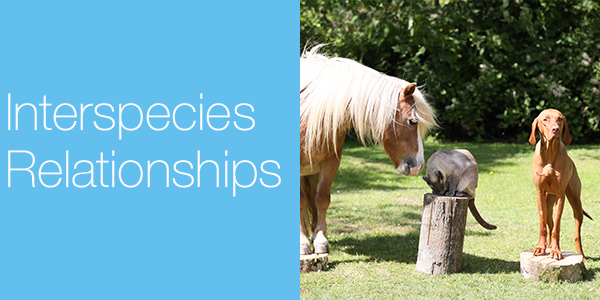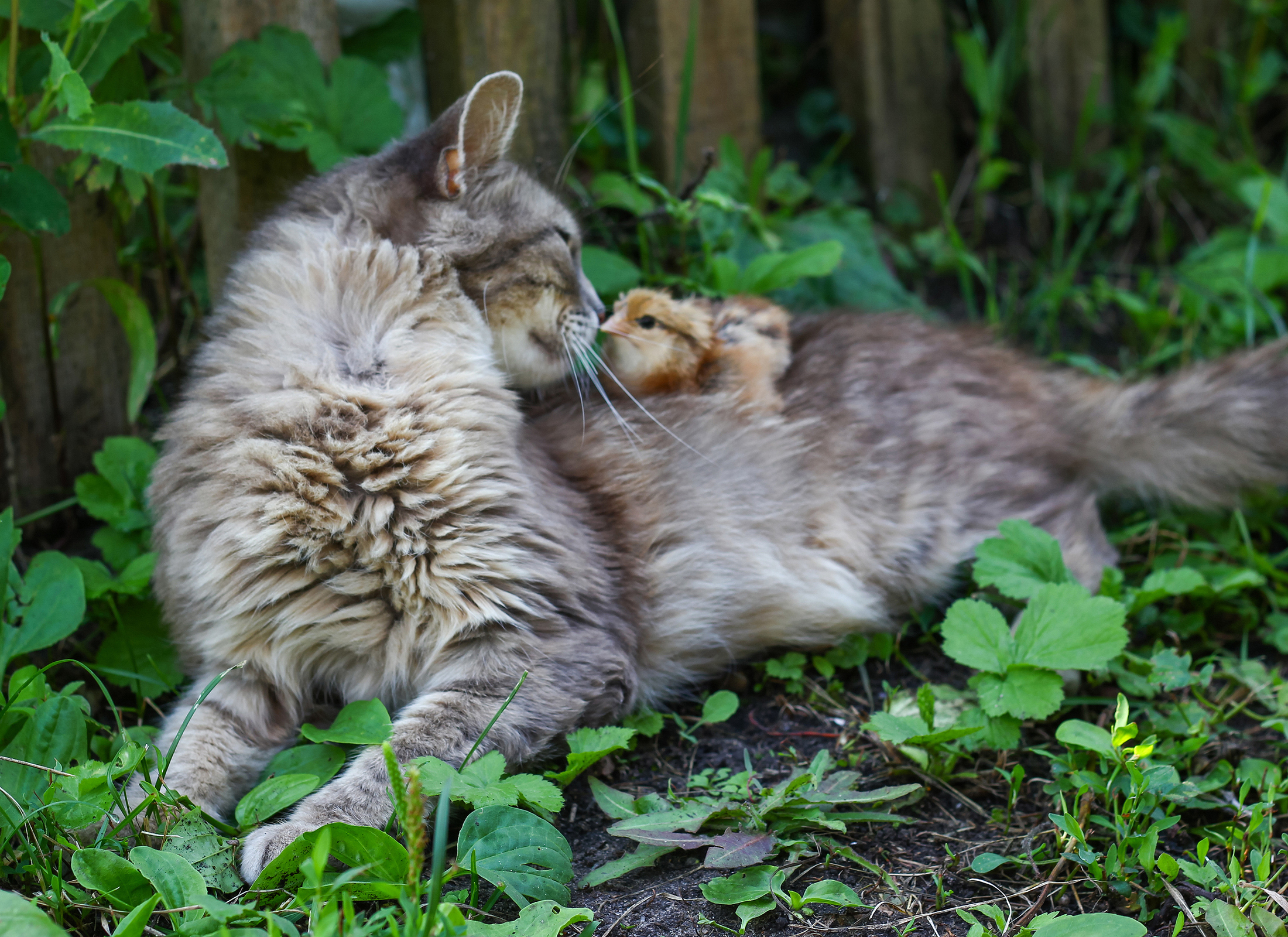




I always marvel at interspecies relationships; the way each species can effortlessly read each other's signals to become the best of friends. Is the language of body language universal? The human species has consciously studied animal behaviour and have become quite adept at reading their signals and minds, but how does a cat know what a dog is thinking or indeed how do our companions know what we are thinking?!
I think everyone who has ever owned a dog knows that they are amazing at reading our emotions, responding to facial expressions and even following pointing gestures. Research has suggested they can even 'hear' our emotions. They often get upset when they hear negatively associated sounds and can distinguish between happiness, fear and sadness. I know my dog hates the sound of my children crying or shouting!


How about their more aloof and independent counterparts, cats? Studies have shown that cats respond to positive human facial expressions, such as smiling, with positive reactions themselves – purring, rubbing and spending time with their human. However, when met with a frown they tend to keep a wide berth! Interestingly this only happened with their owner, suggesting they need to learn these expressions and their associations over time.
But none of this really explains how cats can be friends with dogs, dogs friends with horses, tigers friends with goats?! Maybe it is an evolutionary adaptation, working in a symbiotic manner to gain mutual benefits? Some people suggest these friendships are formed when raised together from young. My cat-chasing Patterdale Stilton is great friends with my 3-legged cat Jasper, whom he's lived with since he was a puppy. However, trying to introduce him at the grand old age of 11 to the two-kitten whirlwind that is Ninja and Nacho is proving a whole different challenge!
Selected Sources
- Marcello et al (2018) 'Lateralized behavior and cardiac activity of dogs in response to human emotional vocalizations' Scientific Reports 8 (77)
- Merola et al (2015) 'Social referencing and cat-human communication' Animal Cognition 18 pp. 639-648
- Romm C. (2015) 'Can a predator really be friends with its prey?' The Atlantic
CONTACT
Copyright © Natural VetCare 2019
Security & Privacy | Cookies | Terms & Conditions





